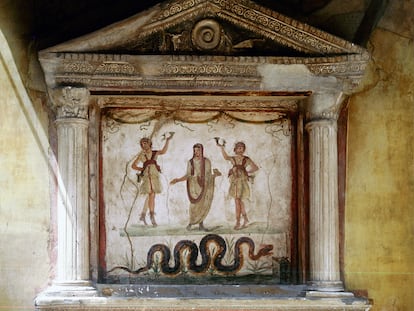No fancy lingerie at the Forum: For the women of ancient Rome, underwear was hardly sexy
Emma Southon, whose new book explores Roman history through 21 notable women, says that the era’s intimate apparel was based on functionality
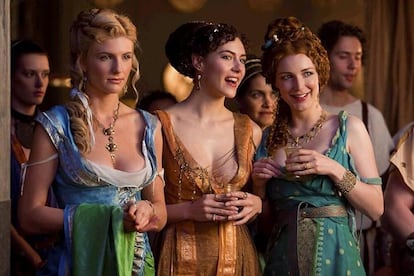

Forget about those images of Roman women in underclothing that have been popularized by productions like Spartacus, Caligula and Erotic Nights of Poppea. Back then, feminine intimate apparel was hardly sexy, comprised of little beyond highly practical garments. So explains the studious Emma Southon, doctor of ancient history at Birmingham University, during an animated conversation that takes place in Barcelona. Southon’s research focuses on sex, family, gender and religion. She’s the author of Agrippina: The Most Extraordinary Woman of the Roman World (2019) and A Fatal Thing Happened on the Way to the Forum (2020), which focuses on crime in ancient Rome. Her latest book is A History of the Roman Empire in 21 Women (Oneworld Publications), which recentralizes the women of Rome as its protagonists. “They were there, we just needed to listen to them,” she says. Southon (40 years old, Brighton, United Kingdom) keeps her listener in the palm of her hand with an irresistible combination of erudition and sense of humor, accompanied by ribald phrasing (“Ataulfo got stabbed in the balls”), surprising comparisons (the circle of Catullus and the Bloomsbury group, the evolution of Octavian and Pokémon transformations) and extemporaneous rebukes to classical authors (“OK Livio, what the fuck, friend?”)
In the historian’s selection of Roman women, one finds well-known figures like Lucrecia, Clodia and Julia — Augustus’s “out of control” daughter — and various empresses and regents (Julia Mamaea and Gala Placidia) alongside a vestal virgin who was executed on charges of impurity, a sex worker, a devoted and lovely upper-class wife, a businesswoman from Pompeii who owned an entertainment complex in the city and who possibly wound up buried there in the eruption of Vesuvius (Julia Felix, who Southon unabashedly describes as a “motomami”), the romantic partner of a commander of a fort in north Britania (in Vindolanda) who sent invitations to her friends and a Christian martyr who was thrown not to the lions, but to a mad cow. Here too are three foreign women, two of whom (the last chapters of the book) fought against Rome: Cartimandua (who is described as “the Quisling queen,” a reference to having assisted the invaders of her own country), Boudica and Zenobia. Curiously, Cleopatra does not make the list. “Too famous,” says Southon. Nor does Messalina, nor Poppaea. “Same deal, and too much scandal,” says the historian, whose rather academic appearance presents a certain contrast to the skeleton tattooed on her right arm, not to mention her sharp tongue, worthy of Cicero (perhaps an indelicate reference, given what became of Cicero’s own tongue.)

“I wanted there to be women who people generally hadn’t heard speak, or barely, that’s why Livia [for whom Southon named her cat] isn’t there either, or Agrippina, who I wrote an entire book about. It was about giving voice to others. I wanted to complicate the idea of Rome, get away from the powerful and their messes, widen our view. Another criteria was that there be women from every one of Rome’s historic eras, to simultaneously offer a chronological tour of its history, from the founding of the city to its fall. I have also included some from outside the Roman sphere to broaden its perspective.” To that end, Southon has included a touch of home, with two Briton women. How does she strike a balance between historical seriousness and that light, sometimes punkish tone, as when she relates how Hadrian’s lover Antinous was hot and would have been a hit on Instagram? “The first draft I write to entertain myself, then I remove jokes. I write at night and reread in the morning, deleting what I no longer find funny. My husband helps me by reading the text.” Southon says she has a healthy relationship with academia. “It’s appreciated that I explain sources and question them, and that everything is very well documented.” She doesn’t know Mary Beard personally (“I adore her!”), but she has heard that the other classicist is a fan of her work.
She agrees that Roman history often seems more accessible to men, full as it is of soldiers, gladiators and politicians. “The idea of Rome that we have received is very masculinized. Still, if you look deeper, there are many females figures with whom to identify. Among the 21 women that I chose, there is a little of everything, powerful women, but also different models; a poet, a successful businesswoman… Different archetypes that allow us to understand Roman-ness from another angle, widening it.” Southon that as a girl, she was hardly interested in the Romans. “In Sussex, where I lived, there was only the military history of Rome, the wars, and I hate wars, none of them appear in my book.” (Which does not prevent her from admitting, paradoxically, that she is a fan of Bernard Cornwell’s novels about Napoleonic Wars’ rifleman Tom Sharpe.) “It was later, during adolescence, when I began to get interested in the Romans through my fascination with scandals and stories about perversions. When you read Suetonius, it’s full of sex and crimes.” Southon thinks that the “HBO version of Rome, with its eroticism and violence, is the reason why the Romans are more entertaining than the Greeks.” She says that during her doctorate, “our friends got together to watch the Spartacus series, with all its blood and sex.”
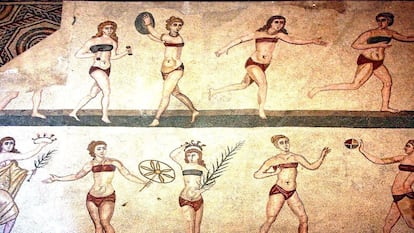
What was it like to be a woman in the Roman world? “It’s hard to say, there was a great variety of ways to be one. But in general, it was hard. And there was no feeling of belonging to the same gender, there was no sisterhood. Women didn’t see themselves in the same way. Livia felt very distinct and foreign to the woman who washed her feet or opened the curtains to wake her. Yet still, they had things in common: they were all under a man’s control. And it was expected that they would have children. That was the number one task of women in Rome and their essence, their defining element: motherhood.” A widely-held belief (among men), says Southon, was that women were, despite all evidence to the contrary, incapable of ruling because they were considered cruel and decadent, characteristics that were particularly linked to the feminine temperament, and were reflected as such in Roman literature. Romans had no women who were soldiers, warriors. “That seemed unnatural to them, it literally grossed them out. That’s why they were so interested in women who fought for other nations. A Roman warrior woman was unthinkable, a goddess, yes, but a woman… A soldier woman seemed as exotic to them as the beings that Pliny described, who had a foot they used as an umbrella.” Southon says there were women gladiators, but they were regarded as eccentrics, a joke. “Romans love weird things, freaks. In the time of Augustus, they put a man on display who stood 9′10″ and during that of Claudio, a centaur. That was the sense in which they displayed women gladiators, who were often associated with crazy emperors like Domitian.”
In her profile of the martyr Perpetua, thrown to the wild beasts — specifically, to a mad cow, reminiscent of Quo Vadis — the academic explains that generally, victims had to be killed by a final blow, delivered by sword, as the beasts were often not up to finishing the task. She notes that in some cases, prisoners were delivered to the animals in a shocking manner, placed “on a Roman version of the stretcher to which Hannibal Lecter was tied in The Silence of the Lambs.” She says there were, during these arduous occasions, lots of theatrics and effects, heavy-handed storytelling.
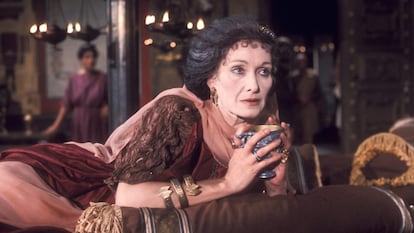
Asked for her favorite from the 21, Southon cities Julia Balbilla, poet from the court of Hadrian (and graffiti artist of Egypt’s Colossi of Memnon) and Julia Felix, the aforementioned Pompeian entrepreneur. What would surprise us if we could chat with an ancient Roman woman today? “It depends on the woman. A Roman citizen would seem quite concerned about everyone’s social position, anxious to know where everyone is located, to determine hierarchies. She would be horrified by egalitarianism, which she would consider insulting, and we would seem very individualistic to her, because in her world, family, surname, genealogical line were defining factors of one’s identity. Above all, what would shock her the most is that we don’t have slaves.” As for her position on sex (pardon the pun), “we would be surprised by how she talked about it openly, very openly, even impudently; we are not aware of how much Christianity has changed us in that aspect.” Regarding clothing, “she would find it scandalous and ridiculous, not only that women wear pants, but that men wear them.”
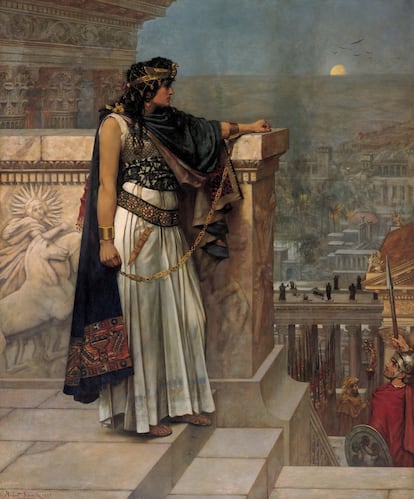
Feminine underwear? “Very basic. There was no lingerie, just some wraps for the chest and long shirts. It was very practical. It wouldn’t have been too interesting. Nothing transparent, nothing sheer. Everything cotton, wool and linen. We have found some leather bikinis, but we don’t know if it was the attire of certain positions, perhaps those of women gladiators, nothing sexy.” She cites Sicilian mosaics whose women subjects appear to be athletes, clad in coarse two-piece outfits comprised of a strophium or mamillare bra and subligaculum panties (men wore something similar, when they wore anything, but theirs were hardly Calvin Klein either.) Silk was a very expensive and rare good “that could only be afforded by empresses on in very posh orgies.”
Is Southon excited for Gladiator 2? “Oh yes, I would love to see what Ridley Scott has done. When I saw the first one, I was so busy tearing it apart and pointing out all the mistakes. Now I’m sorry I was such a jerk and didn’t just enjoy it and have fun. How I laughed at Napoleon!”
Sign up for our weekly newsletter to get more English-language news coverage from EL PAÍS USA Edition
Tu suscripción se está usando en otro dispositivo
¿Quieres añadir otro usuario a tu suscripción?
Si continúas leyendo en este dispositivo, no se podrá leer en el otro.
FlechaTu suscripción se está usando en otro dispositivo y solo puedes acceder a EL PAÍS desde un dispositivo a la vez.
Si quieres compartir tu cuenta, cambia tu suscripción a la modalidad Premium, así podrás añadir otro usuario. Cada uno accederá con su propia cuenta de email, lo que os permitirá personalizar vuestra experiencia en EL PAÍS.
¿Tienes una suscripción de empresa? Accede aquí para contratar más cuentas.
En el caso de no saber quién está usando tu cuenta, te recomendamos cambiar tu contraseña aquí.
Si decides continuar compartiendo tu cuenta, este mensaje se mostrará en tu dispositivo y en el de la otra persona que está usando tu cuenta de forma indefinida, afectando a tu experiencia de lectura. Puedes consultar aquí los términos y condiciones de la suscripción digital.
More information
Archived In
Últimas noticias
Maduro pleads not guilty before the federal court in New York: ‘I am still the president of Venezuela’
A new test can detect Alzheimer’s from a finger prick
UN team enters Sudanese city of El Fasher after paramilitary massacre: ‘It’s like a ghost town’
A recipe for resistance: Indigenous peoples politicize their struggles from the kitchen
Most viewed
- Gilles Lipovetsky: ‘If you want to live better and fall in love, take Prozac, don’t look to philosophy’
- Alain Aspect, Nobel laureate in physics: ‘Einstein was so smart that he would have had to recognize quantum entanglement’
- Alvin Hellerstein, a 92-year-old judge appointed by Bill Clinton, to preside over Maduro’s trial in New York
- Why oil has been at the center of Venezuela-US conflicts for decades
- Maduro’s downfall puts China’s relationship with Venezuela to the test

